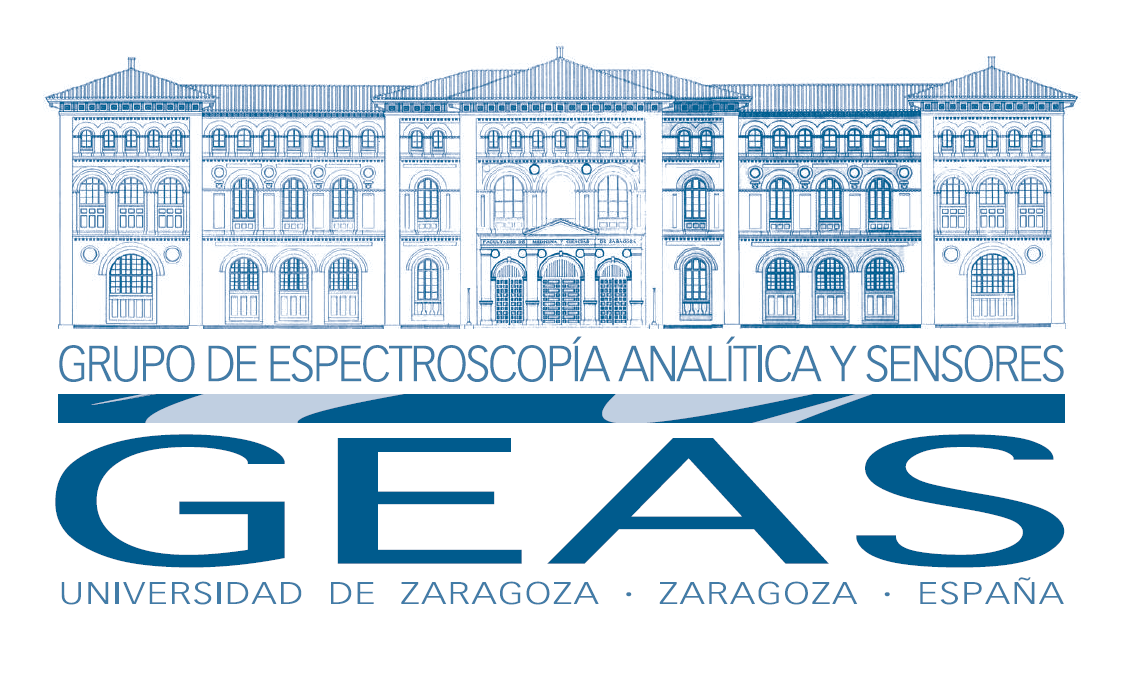
GEAS Research Lines
Our lines of research
,The research lines of the GEAS group correspond to the following three lines of work:
I. Analytical Nanometrology.
The research, development and application of new techniques, methods and analytical platforms for the detection, characterization, and quantification of both synthetic and natural nanomaterials in consumer products, the environment and biological systems, and individual particle and cell detection techniques.
II. (Bio) Electrochemical and optical analytical sensors.
The design, development, and application of catalytic (enzymes) and affinity (antibodies, aptamers) (bio)sensors for the determination in situ of contaminants, clinical parameters, and other parameters of interest in the field of environment, food safety, and biochemistry clinics.
III. Characterization of heritage materials.
Non-destructive instrumental techniques for the best knowledge and preservation of the artistic and historical heritage, with special emphasis on the study of ceramics, pigments and organic wastes.
GEAS
Analytical Nanometrology
Research and Development of new analytical techniques and methodologies for the characterization of artificial nanomaterials and nanoparticles in consumer products and strategic materials. Characterization of nanoparticles of Ag, Au, Co, Fe, SiO2, CeO2, metal oxides, etc.
Nanotechnology and analytical environmental nanoscience.
Multielemental chemical and functional speciation in natural nanomaterials of importance in ecosystems: NOM, colloids, phytoplankton, biocolloids, … etc. Application of techniques of Single Particle Analysis, Single Cell Analysis, dynamic radiation scattering, hydrodynamic chromatography and ultrafiltration techniques and AFFF (assymetric flow field fraction) for the separation of nanoparticles from Single Particle Analysis and Single Cell Analysis.
GEAS
Analytical spectroscopic and electrochemical sensors
Design and development of new catalytic (enzymatic) and affinity (antibodies, aptamers) biosensors, for the in situ quantification of endogenous clinical parameters, toxic organic molecules, contaminants, and other parameters of interest.
Electrochemical sensors for the detection and quantification of metallic nanoparticles. Electrochemical characterization of modified surfaces. Nanostructured analytical biosensors.
Applications of these (bio) sensors in the field of clinical biochemistry, environment and food safety.
GEAS
Characterization of strategic materials using non-destructive instrumental methods
Application of non-destructive instrumental techniques for the best knowledge of the artistic, monumental and natural heritage. Study of new materials.
Application of scanning electron microscopy (SEM), transmission (TEM) and field emission scanning (FESEM) techniques to the study of biological systems, materials, and nanomaterials of interest
Latest GEAS news
Participation in the Workshop: Reducing water pollution from pharmaceuticals. Zaragoza, December 13, 2019
Prof. Juan C. Vidal (GEAS) has participated in the Workshop called “Reducing water pollution from pharmaceuticals”, with a conference entitled “Antibiotics and water in Aragon region”, and subsequent debate between the lecturers and the attending experts , on the...
Coordination meeting of the OUTBIOTICS POCTEFA 183/16 project, in Jaca (Huesca)
On June 19, 2019, a coordination meeting of the OUTBIOTICS POCTEFA 183/16 project was held in the Sala Pirineos of the Palacio de Congresos de Jaca (Huesca), chaired by its coordinator Prof. Juan R. Castillo (University of Zaragoza , GEAS group). At this meeting, the...
Co-supervision agreements for Doctoral Theses of the University of Pau-CNRS and the University of Zaragoza
Within the framework of the collaboration agreement for co-tutors of Doctoral Theses , between the University of Pau and the University of Zaragoza, the proposing body has approved in April 2019 two co-tutors for Doctoral Theses On the one hand, and under the...




